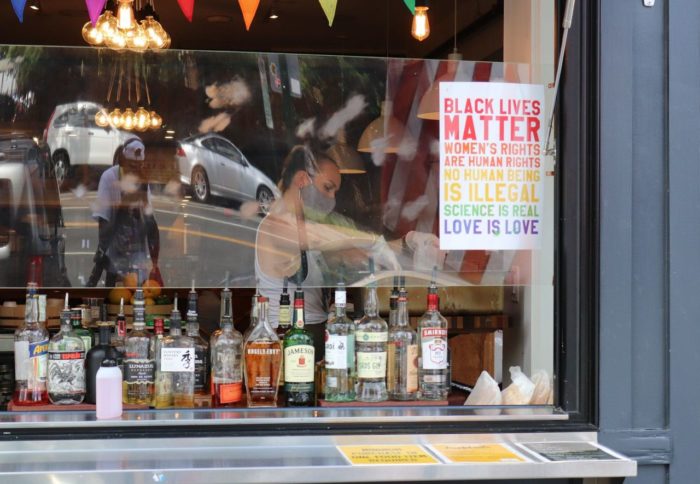
The post-pandemic Boston-area restaurant scene could end up being one that’s nearly unrecognizable in some ways. Whether this is a good thing or a bad thing (or both) remains to be seen
Remember those dire predictions in the spring of 2020 of nearly half—or maybe more—restaurants in the Greater Boston area potentially closing for good due to the coronavirus outbreak? While that didn’t happen, it still ultimately could based on what transpires over the coming months. What’s interesting is that the equally dire predictions of endless shuttered spots creating a lunar landscape of sorts in the city and beyond will apparently not be happening, because the already-closed (and potentially closed) dining and drinking places could be equaled by, if not exceeded by, newly opened and soon-to-open restaurants and bars. What does this mean for the region? A lot, really, as a major shakeup appears to be in the works that some in the industry actually did predict early on.
Before the pandemic arrived in force last March, there were certainly some trends taking hold within the local restaurant scene, including upscale comfort food spots continuing to be red hot, a new era of fine-dining restaurants opening, and Asian eateries of all kinds—from cheap eats takeout spots to fusion seafood places to more upscale restaurants—opening throughout the region. The pandemic at least temporarily put the kibosh on these first two, as it was pretty obvious from the start that wagyu ribeye, roast duck, and truffled pasta dishes don’t travel well and simply weren’t geared for takeout and delivery. Some of the higher-end places figured this out pretty quickly and started to offer more reasonably priced and takeout-friendly items such as burgers, macaroni and cheese, and burritos, and there were rumblings among those who were involved in such dining spots that some permanent changes would probably need to be made, especially with ghost kitchens (delivery-only businesses that mainly focus on dishes geared for home dining) starting to take off during the height of the outbreak.
The trend toward takeout and delivery has been much kinder to dining spots that were already geared toward such options, including numerous Asian restaurants, which is ironic considering that due to fear and existing prejudices it was Chinese restaurants—including Chinese-American takeout spots—that were hit harder than perhaps any other group in the industry because of where the virus first appeared. Today, one of the hottest trends is that of the casual Asian eatery—in particular East and Southeast Asian places—and specifically wallet-friendly spots that offer options like tea, fried chicken, and frozen treats. Such places continue to open in the existing “Little Chinatown” areas of North Quincy, Wollaston, and Malden Center, while Allston is continuing to see a boom in casual Asian restaurants as well, and nearly every suburb—from Braintree to Stoneham to Burlington to Watertown—is also seeing this trend.
An interesting area to look at right now is national and local chains, and in both cases, you’re starting to see a bit of the “changing of the guard,” with both big and small chains closing underperforming outlets while relatively new names both locally and nationally are expanding greatly and have the potential to become big players in the Greater Boston area. There is also talk (and this chatter dates way back to the first few weeks of the pandemic) that the more stable national chains are basically waiting in the wings, eyeing various spaces in and around the city and picking the right moment to pounce on spaces when the time is right. The end result could be that more than a few storefronts that were formerly home to independent restaurants could end up being taken over by chains that have been hoping to get a foothold in the area, or those that are simply looking to further expand into the region.
This last point is disturbing to people who have been worried for a while now about the continuing disappearance of the old-fashioned neighborhood restaurant/bar. While most in this category seem to have survived the pandemic, the question is, for how much longer? High rents, a lack of workers, changing demographics, and, of course, more than a year of upheaval due to the virus have worn away at a lot of places in the restaurant industry, and while a national chain can simply close an “underperforming” location and move on from there, the closing of a warm and inviting local spot that has been a fixture among residents for decades leaves a huge hole that can possibly never be filled. This is indeed one of the true wild cards in the restaurant industry, as no one really knows for sure what could happen long-term, since there are simply so many variables in play. For instance, families that have run places for decades may simply want to get out after the stress of the past year, owners may decide that this is a good time to retire, rents in hot residential neighborhoods could get even more out of hand, or development might heat up again with entire blocks being torn down and rebuilt, all leading to the possibility of chains or local restaurant groups replacing old-school dining and drinking joints with something entirely different.
A question that has been on many people’s minds over the past year is, what will become of areas that rely heavily on office workers, including downtown Boston, the Seaport District, and Kendall Square in Cambridge? For a while it seemed like these spots would remain empty for years to come, as workers would continue doing their jobs at home, but this appears to be starting to change now. It could be too late for many restaurants in these areas that continue to hang on, however, as they generally have seen such little foot traffic since March of 2020—and any chances of making up lost income by catering has been squelched by the fact that you can’t really depend on catering if no one is working nearby. As a result, dining spots in the shadows of office towers have mostly had to rely on local residents doing takeout and delivery, but in some of these areas, there just aren’t enough people living close by to justify staying open. As a result, if you take a walk through the Financial District today, you’ll see eateries that remain locked up and dark and it is unknown when—or if—they might open back up again. And if they don’t, who might move in? Chains, perhaps, but in at least some cases, the storefronts may never serve food again, instead becoming banks or other businesses.
As mentioned here over the past several months, the suburbs have fared relatively well during the pandemic, in part because so many people who live outside of Boston have been working from home, leading them to do takeout/delivery at nearby spots rather than going into the city for food. But the changes taking place—especially along Routes 128 and 495—are many and far reaching, including the aforementioned boom of Asian restaurants opening in countless communities, while a few of the more upscale suburban spots have been replaced by slightly more reasonably priced and casual places—and in some cases under the same ownership, showing that restaurant owners and hospitality groups don’t seem to have a ton of confidence in fine dining returning anytime soon. The suburbs are also seeing an increase in Mexican eateries, Indian restaurants, coffee shops, and Middle Eastern places, and many if not most of these focus on casual, inexpensive food with at least a partial emphasis on food and drinks to go. What all of this means: The flight of higher-end restaurants to the suburbs from the city that was taking place pre-pandemic has slowed down at least a little bit, while we’re also seeing an interesting trend that almost has the feel of the return of unpretentious neighborhood spots (including cuisines of all kinds), though quite often in strip malls rather than residential spaces.
No one can really be sure of what will happen to the local restaurant industry as we continue to find our way out of the pandemic, but it does look as though the worries of Depression-like scenes of abandoned storefronts on every block may not become reality. Instead, the restaurant scene both in the city and the suburbs may simply be different, and while not everyone will like the changes, it’s certainly better than the alternative.
Marc is the founder of @hiddenboston, a textbook editor, a hike leader for @AppMtnClub, and a food and travel writer and commenter for DigBoston, NBC/NECN, WBZ, WMFO and indie617.

